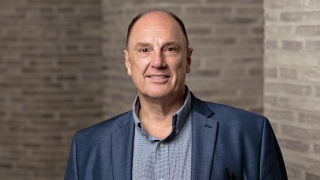Table of Contents and Director's Foreword
Chapter one1. Director's Foreword
What Did We Do, and Does It Matter?
2. Campus and Community Programs
Campus Engagement: Curricular and Co-curricular
Curricular Engagement
Co-curricular Engagement
Intern Engagement
Programs for Campus and the Community
Public Programs
Programs for Dartmouth Student Groups, Dartmouth Faculty and Staff, and Hood Museum Affiliates
Special School Community Events
Programs for Schools
3. Exhibitions
Permanent Collection Reinstallations
A Space for Dialogue
4. Collections
Acquisitions
Outgoing Loans
Incoming Loans
Objects Conserved
5. External Relations
Publications
Public Relations: Print, Online, and Social Media
Visitor Services
6. Development
Director's Circle Members
7. Our Team
Staff, Board, and Volunteers
Interns, Museum Club, and Student Staff
8. By the Numbers
Museum Gallery Attendance
Dartmouth Student Attendance
Children and Youth Attendance
Adult Attendance
Online Engagement
Museum Website Visits
Facebook Followers
Instagram Followers
Twitter Followers
The Collection
Works in the Collection
Total Objects in the Collection Digitized
Objects Digitized This Year
Works Receiving Conservation
Loans to Other Institutions
New Acquisitions
Academic Use of the Galleries and Bernstein Center for Object Study
Number of Dartmouth Class Sessions
Number of Dartmouth Student Visits
Works Pulled from Storage for Teaching
Number of Unique Dartmouth Courses
Programs
Total Programs
Program Attendance
Public Programs
Attendance at Public Programs
Programs for Dartmouth Students
Attendance at Programs for Dartmouth Students
Dartmouth Faculty, Staff, Alumni, and Other Programs
Attendance at Dartmouth Faculty, Staff, Alumni, and Other Programs
School tours
K–12 Students Served through Images, Art Start, and Tours
Staff
Full time
Dartmouth Student Interns
Docents
Students
Museum Statistics
Galleries
Bernstein Center for Object Study Square Footage

ABOVE Director John Stomberg. Photo by Rob Strong.
DIRECTOR'S FORWARD: WHAT DID WE DO, AND DOES IT MATTER?
What did we do?
Having a few years to rethink the presentation of art and history was not an opportunity that the Hood Museum of Art staff took lightly. Instead, everyone from our designers and educators to our curators and communicators gathered regularly for over a year to discuss the possibilities. As with any group of clever professionals, we decided to embrace our challenges as opportunities that allowed us to diverge from our past practices and to forge ahead boldly regardless of a serious dearth of precedents.
We recognized that the Hood Museum collections are brilliant and deep in many of the chapters in the story of art—but far from all of them. We also linked that realization to the belief that strict narrative art histories are rife with problematic assumptions, generalizations, and misrepresentations. Happily, these liabilities became our chief assets. In the new Hood Museum, we share multiple stories centered on creative practice and cultural output without forcing them into concrete spatial and temporal relationships. To do this, we have had to unmoor our galleries from strict sequencing, accepted historical periodization, and underexamined geographical descriptions. Through our focus on micro-stories, or episodes, we more faithfully share the current thinking on history as an ever-evolving series of constructs, and on museum work itself as a creative practice.
Does it matter?
This can seem confusing at first. Even with the new building, the Hood comprises but sixteen galleries. Our visitors careen through time and across the globe as they travel through galleries featuring ancient Assyrian carving next to presentations of contemporary Iranian painting, or ceramics from Peru alongside objects from India. But this approach is only disorienting when compared to the status quo of museum display based on enlightenment-era principles for organizing knowledge. Liberation from these constricts is exhilarating. Our visitors discover the pure joy and delight of similarity and diversity within a variety of media, makers, and millennia.
To achieve this goal, we have had to commit to an ambitious mode of arrangement. There are no galleries that are permanently installed, and only one has a geographical commitment. In any case, with nearly 65,000 artworks and material culture objects, there is no way for the Hood Museum to have its whole collection on display—at once. Our solution is time. We have committed to changing our galleries regularly and to sharing new portions of the collection constantly. Our story of art cannot be etched in stone; rather, our display philosophy reflects the belief that art and its history are perpetually in flux. Freed from conventional narratives, we embrace new ways of knowing, accept degrees of ambiguity, and keep our minds open to change and intellectual development. We believe that matters—a lot.
John R. Stomberg
Virginia Rice Kelsey 1961s Director

